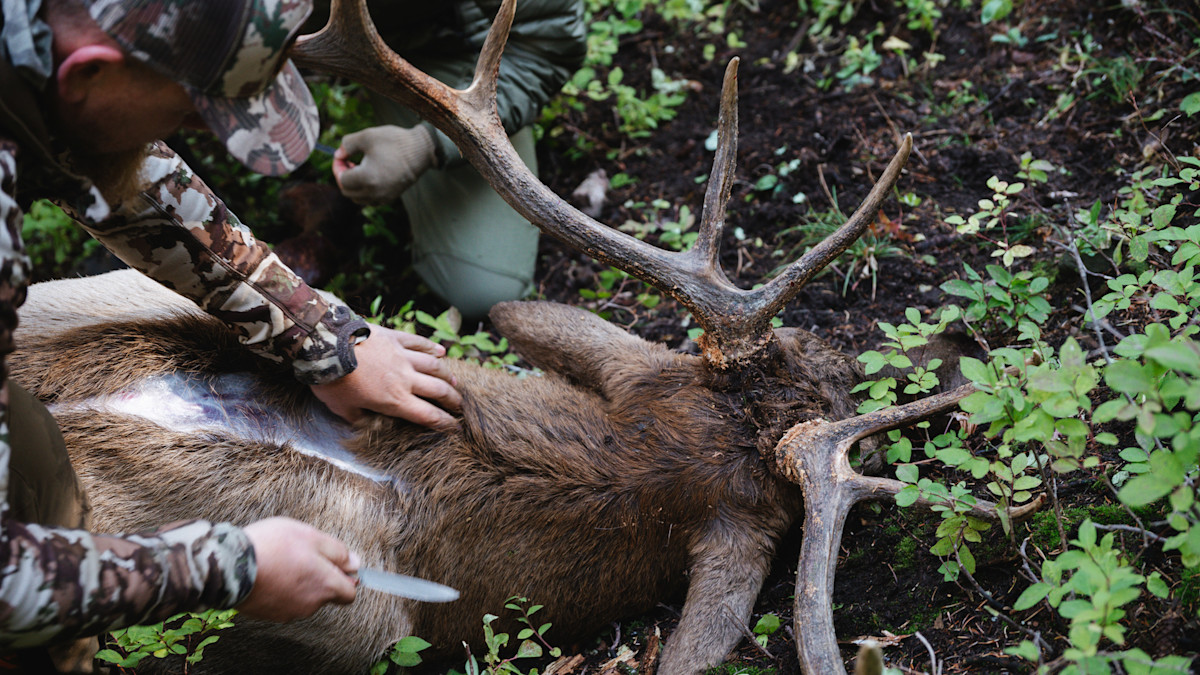
In the realm of the average hunter, elk are king. While the one-percenters busy themselves with $50,000 sheep tags, or African safaris to quickly fill up their trophy rooms, the Rocky Mountain elk remains at the top of the heap for most hunters.
Why shouldn’t it? Bulls can weigh four times that of a bomber whitetail, and if you’re lucky, they’ll scream and put on a show for you. The scenery in the mountains is worth the price of admission alone, but coupled with the fact that you might beat the odds and tag an elk, it’s something special altogether.
Elk hunting is also—at least on an over-the-counter (OTC) or general tag—supremely challenging. It’s a low-density, high-pressure affair that is almost certain to end in unfilled tags. That doesn’t mean it has to, or that you can’t enjoy an elk hunt for more than the elk themselves, you can. The truth is, there are a lot of ways to increase the fun you’ll have on what is likely to be your toughest hunt of the year. This all starts with a dose of reality.
Bad Odds
If you look at the data from the 2021 season in Colorado, you’ll see they lump together all units into a chart that shows harvest data, hunter numbers, and success ratios. This info includes the most heavily pressured OTC units as well as the hardest-to-draw premier units. Overall success for archery hunters lands at 11%.
Essentially, nine out of every 10 elk hunters won’t kill an elk. If you break it down further into OTC units only, you can probably knock that 11% down to the low single digits. Your odds aren’t good, but you can increase them. Lower your standards to any legal elk, which helps a lot. Trophy hunting an OTC unit is about like deciding it’s supermodels or bust, and your hunting grounds are a dive bar in rural Nebraska. Good luck, amigo.
Be realistic about your chances, it’ll help you have more fun. Then, get ready to really hunt.
The Secret Is Work
Most hunters head out west with their onX chock full of waypoints on meadows, visible water holes, and trailheads. They get out there early, head to the best-looking stuff, and then shake hands with their fellow hunters who are already there.
Over-the-counter elk are low-density in the same way big woods whitetails are low density. You have a mixture of thousands of acres of potential cover with very few animals to fill it up. It’s all about finding pockets of elk, and that’s where the work comes in.
They aren’t going to be in the obvious stuff after the first couple of days. Make a plan that doesn’t allow for downtime. Hunt the mornings and evenings in your best stuff, but use the midday to slip into the dark timber or certain drainages to look for sign. It’s hackneyed, but you really do have to go where others won’t. Eventually, if you use your time wisely and aren’t afraid to put on the miles, you’ll find a concentration of elk that is worth calling to.
Mix In Other Opportunities
Some of the most fun I’ve had on elk hunts involved not hunting elk. I’ve caught high-country trout on a flyrod, shot grouse for dinner with judo points, and stalked mule deer and bears. Research all potential opportunities in your state and unit, and then consider being open to them.
I personally have a rule that I always buy a tag for a secondary critter. I’ve been burned in the past on only buying a license for my target animal, and I won’t do it anymore. Having a bear license, or a mule deer tag, or just the means to small game hunt or fish, can take a grind of an elk hunt and inject some real fun into it.
I look at it this way—as a Minnesota resident, my time in the mountains is pretty limited. I want to enjoy that scenery for all it can offer me, and if that means catching a few trout in the middle of the day while I’m waiting for the thermals to get right, so be it. Some of these opportunities come with added cost, but no one goes elk hunting to save money. I’d rather cheap out on something else in life, and apply extra dough for a mule deer tag that shares a unit with my elk spot.
Conclusion
It’s not easy. It’s often not fun. But over-the-counter elk units are out there, and for the time being, anyone can get into them. If that happens to be you, consider how you’re setting yourself up to either enjoy the hunt, or secretly hate it. Think about what you could do, like lowering your standards, working a little harder, or just targeting some other opportunity, that might make your time in the mountains that much better. Then do it.
For more elk hunting information, check out these articles: How to Clean Elk Ivories, How To Kill A Bull Elk On Opening Day, and How To Beat The Crowds In An Over-The-Counter Elk Unit.





Conversation